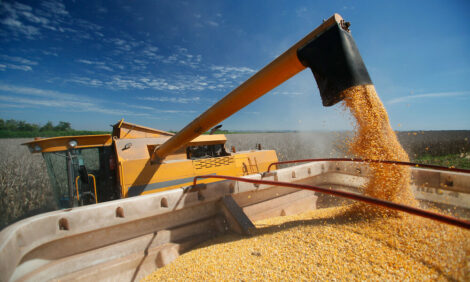



On-farm Control Measure to Protect Broiler Chickens against Campylobacter
Campylobacter is a zoonotic bacterium of international importance, cited by the World Health Organisation as the number one food-borne pathogen in the developed world, writes Tom Humphrey, Professor of Bacteriology and Food Safety at the College of Medicine at Swansea University.
In the EU, about one per cent of the population is infected each year, mostly by contaminated chicken. Further, the incidence of Campylobacter-positive flocks at slaughter and contaminated carcasss at retail is high (around 75 per cent) although Scandinavian countries have lower levels.
Mounting evidence shows Campylobacter jejuni, the main species in poultry and human infections, is not a harmless commensal in broilers and poses an economic threat to poultry health and performance and a growing health risk to humans.
The industry must develop better control methods in broiler production that must be incorporated into sustainable systems.
Importantly, these recent behavioural changes in C. jejuni also impact on control methods.
Production Chain Approach to Control
 Effective control requires intervention throughout the poultry chain.
Effective control requires intervention throughout the poultry chain.
There is widespread focus on controlling broiler carcass surface contamination during processing. Carcass surfaces can carry high levels of Campylobacter, which leads to cross-contamination during catering, a risk factor for human infection.
Slaughterhouse interventions, such as adding chlorine to chilling tanks, where water cooling is used, crust freezing of carcass surfaces and washing birds with organic acids reduce surface Campylobacter levels and improve food safety.
However, it must be determined whether the strains left on carcasses after treatment are potentially more robust and pose a greater health threat.
With Salmonella, for example, there is a link with between environmental robustness and virulence.
Some interventions are limited by legislation, although this may change, particularly in the EU. Also, it must be recognised carcass surface contamination is not the only food safety threat.
Various studies have shown it is possible to isolate C. jejuni, from muscle tissues, although not all studies could reliably distinguish between surface and internal contamination.
A recent US study revealed 12 per cent of aseptically-taken blood samples at slaughter were Campylobacter-positive, indicating a potential route of muscle contamination.
Under-cooked chicken is a global source of campylobacteriosis. Even where high levels of chlorine are used in carcass processing there is still an appreciable Campylobacter problem.
Of immediate concern is that chicken liver tissues are frequently C. jejuni positive and associated with disease in that organ. In infected livers, C. jejuni levels can be high, permitting survival when cooking is incomplete.
In some countries, chicken liver is important in Campylobacter outbreaks.
On-farm Intervention
 The ‘gold standard’ for protecting housed birds from Campylobacter is biosecurity.
The ‘gold standard’ for protecting housed birds from Campylobacter is biosecurity.
Measures reported as potentially effective include hygiene barriers creating ‘clean’ areas; dedicated clothing and footwear; boot disinfection upon entry and exit from broiler houses; hand-washing; water sanitisation and exclusion of flying insects (effective in Scandinavia).
Thorough cleaning and disinfection between flocks, modifications to houses to improve cleanliness, wildlife and vermin exclusion may be useful.
However, biosecurity must be rigorous and continuous. As high levels of Campylobacter-positive birds suggest, effective biosecurity is difficult for farmers to achieve.
If bacteria cannot be excluded, interventions that increase bird resistance to Campylobacter or remove the bacteria from positive ones must be identified.
Many treatments have been shown to have a degree of success. However, measures that work in the laboratory often do not in field trials.
Work is underway on chickens more resistant to Campylobacter. Genes associated with resistance have been identified, although it will take time for resistant birds to become available.
Vaccines are a possibility.
Antibodies from eggs from hyper-immune hens, added to feed, protected broilers against C. jejuni, although there was experiment-to-experiment variation in levels of protection seen.
Variability when working with C. jejuni is commonly due to differences between outbred animals.
Another factor is that Campylobacter frequently mutate. Even overnight broth culture can result in a population with mutations in key virulence genes like those governing motility. Campylobacter are naturally competent and will take up DNA from other bacteria. Sometimes, the strain at the beginning of a study is not the same as the one at its conclusion.
Overcoming variation is a major challenge.
A promising intervention is a 'cocktail' of anti-Campylobacter phages (bactericidal viruses). This treatment can reduce levels in treated birds and might be particularly useful if applied several days before slaughter. However, more study is needed in commercial settings.
*
"Broilers with healthier guts will better withstand challenge from Campylobacter and other pathogens and demonstrate improved performance."
Improved Gut Health May Offer Protection
Recent work has shown that the broilers most likely to be Campylobacter-positive come from flocks with high condemnation rates for infection at slaughter (principally avian pathogenic E. coli) and/or increased incidence of hock marks or pododermatitis.
Since these conditions are indicators for poor gut health, improving it is likely to better protect broilers against Campylobacter.
Certain dietary additives and beneficial bacteria show promise. Not only do they better protect against Campylobacter, they also promote immune development and enhance the barrier function of gut mucosa.
Another gut health strategy involves the principle of 'competitive exclusion'.
Benign bacteria, sourced from pathogen-free birds, are introduced into the gut and occupy the ecological niches in the gut denying pathogens space in which to establish themselves.
Public health and improved poultry performance require an understanding of broiler gut health and the management factors that influence it.
Broilers with healthier guts will better withstand challenge from Campylobacter and other pathogens and demonstrate improved performance.
June 2014










